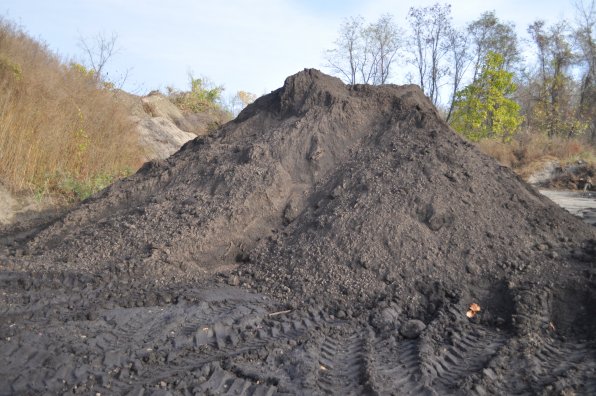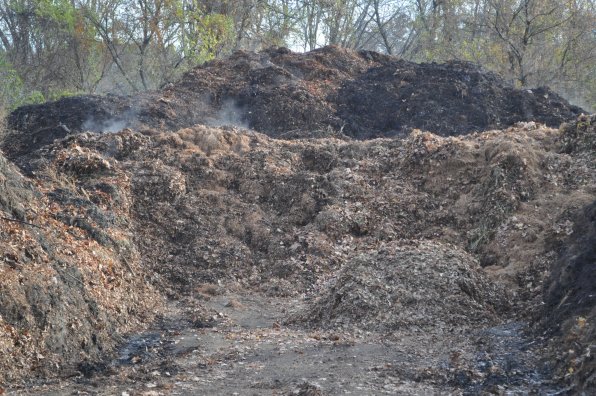Giant piles of leaves are popping up all over the city, and we presume the vast majority of them have come from your yards (there may have been a few that hitchhiked in). As we were dragging yet another tarp load to the curb from the Insider manse the other day, we got to thinking – where do all the city’s leaves go when they leave the mean streets? Our parents told us stories growing up about the big leaf pile in the sky, but that didn’t seem like a real thing.
Guess what? It’s not. But there is a big leaf pile in the city, and it’s where the majority of Concord’s leaves go, according to Jim Major of the General Services Department. But they don’t just sit there watching paint dry.
The leaves are trucked to a site off of Fort Eddy Road, right behind Capital Area Veterinary Emergency Services, where they are broken down into compost over several years. The leaves are rolled two or three times a year by a large excavator, Major said, which, with the help of the sun, essentially cooks them from the inside out – you can see plumes of steam rising from the pile at any given time – and breaks them down.
“The organics in there break down on the inside,” Major said. “When you dig in the pile, there’s steam that comes out of it, and when you turn it over, the stuff on the outside gets turned into the middle and almost cooks.”
The leaves stay for as long as seven years before eventually becoming a rich compost soil that is sold to residents for planting and gardening. Think about that – you could be using leaves you raked from your yard when you’re planting your garden.
“It’s a pretty good pile,” Major said. “We keep turning it over, so the older it is, the more broken down it is. It looks like loam or dirt (by the end.)”
Not all of the leaves wind up at the same spot, though. Major said the city also takes some to Brochu Nurseries and Landscaping on Commercial Street and Lewis Farm on Silk Farm Road, and each of those locations has its own technique for breaking the leaves down into compost.
In the end, though, the idea is the same – take those pesky buggers away from your house and turn them into something that can be used again to beautify the city. Pretty sweet, if you ask us.
Especially because the city drives right up to your house and takes everything away for you.
“It’s a long-standing tradition,” Major said of the leaf pick-up. “One I don’t think is going to go away anytime soon.”










